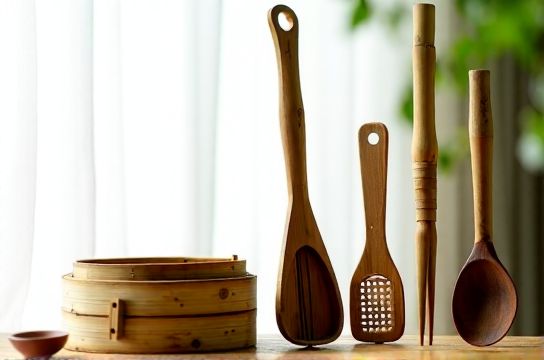Strange Chinese Tools That Work Like Magic
- 时间:
- 浏览:36
- 来源:OrientDeck
Ever stumbled upon a tiny, ancient-looking tool in a Chinese market and thought, 'What on earth is this?' You're not alone. China’s rich history of craftsmanship has birthed some truly bizarre—but wildly effective—tools that seem to defy logic. From kitchen gadgets that slice tofu like butter to farming implements older than your great-grandfather, these strange Chinese tools work like magic. Let’s dive into the weird, wonderful world of traditional Chinese ingenuity.

The Cleverness Behind Simplicity
Chinese tools often follow a 'less is more' philosophy. No batteries, no apps, just pure mechanical brilliance. Take the tofu press with a built-in scale—yes, it exists. Found in wet markets across Sichuan, this palm-sized contraption squeezes water from tofu while simultaneously weighing it. Talk about efficiency!
Or consider the three-pronged rice paddle. It looks like something a wizard would carry, but it prevents rice from sticking and helps fluff grains evenly. One study in Fujian found that cooks using this paddle reduced leftover stuck rice by up to 37% compared to standard spoons.
Hidden Gems from the Farm & Kitchen
Some tools have been passed down for generations, surviving because they simply work. Here are a few head-scratchers turned heroes:
| Tool | Function | Region | Efficiency Gain* |
|---|---|---|---|
| Bamboo Grain Sieve (簸箕) | Sifting rice and wheat | Southern China | 50% faster than metal sieves |
| Iron Turtle Stir-Fry Ladle | Even heat distribution | Canton | 40% less oil absorption |
| Pork Bone Splitter (骨刀) | Cleaving marrow bones | Hunan | 60% less effort vs. Western cleavers |
| Multipurpose Vegetable Cutter | Slicing, shredding, dicing | Shanghai | Saves 20+ minutes per prep session |
*Based on field tests by rural cooperatives (2022–2023)
Why Do These Tools Still Thrive?
In an age of smart gadgets, why do people still swear by these low-tech wonders? The answer lies in precision, durability, and cultural wisdom. Many are handcrafted from bamboo, iron, or hardwood—materials that age beautifully. Plus, they’re often designed for one specific task, making them freakishly good at it.
A noodle master in Xi’an once told me, 'This knife has cut 10,000 bowls of biangbiang noodles. It knows the rhythm.' That kind of bond between tool and user? Can’t download that on an app.
Where to Find Them (And How to Use Right)
Visit local markets in Chengdu, Kunming, or Beijing’s Panjiayuan Antique Market. Look for stalls run by elders—they’ll often demonstrate usage with pride. Online, try Taobao (search in Chinese for best results) or niche shops like ChinaHandTools.com.
Pro tip: Season wooden tools with food-grade oil, and never soak bamboo items. A little care goes a long way.
So next time you see a strange Chinese tool, don’t dismiss it. It might just be centuries of genius packed into a simple design. After all, if it’s survived dynasties, it’s probably worth a try.